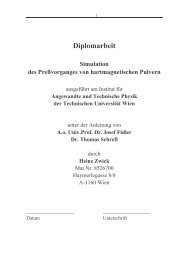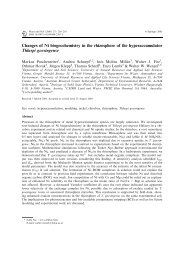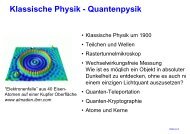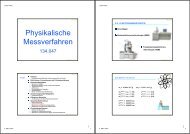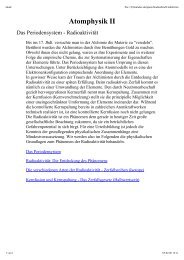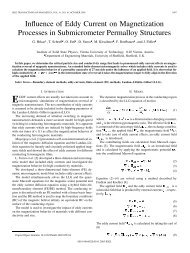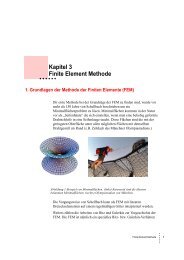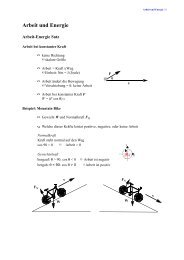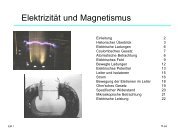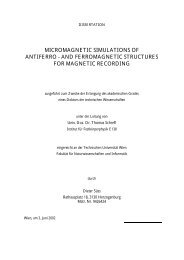Read Back Signals in Magnetic Recording - Research Group Fidler
Read Back Signals in Magnetic Recording - Research Group Fidler
Read Back Signals in Magnetic Recording - Research Group Fidler
You also want an ePaper? Increase the reach of your titles
YUMPU automatically turns print PDFs into web optimized ePapers that Google loves.
List of Figures<br />
Figure 6.1: The magnetic model used for the FEM calculations. The mesh size for the<br />
shields (green) is 50 nm, and is ref<strong>in</strong>ed to 5 nm near the track and near the sp<strong>in</strong><br />
valve layers. The hard bias magnets (purple), the free layer (dark blue), and the<br />
p<strong>in</strong>ned layer (light blue) are also meshed with triangle size of 5 nm..............................66<br />
Figure 6.2: The FEM conductor model is shown. This simplified model shows the four<br />
ma<strong>in</strong> layers of a GMR element, which contribute most to the conductance: The<br />
free layer (dark blue) the nonmagnetic Cu layer (orange), the p<strong>in</strong>ned layer (light<br />
blue), and the antiferromagnet (yellow). Additionally the high conductive leads<br />
(p<strong>in</strong>k) are shown..............................................................................................................67<br />
Figure 6.3: The effective conductivities for a typical sp<strong>in</strong> valve taken from [37]. ................68<br />
Figure 6.4: The normalized magnetization of the free layer and the p<strong>in</strong>ned layer <strong>in</strong><br />
equilibrium state for the two different current directions. The color code gives the<br />
z-component of the normalized magnetization, red corresponds to the positive and<br />
blue to the negative z-direction. Thus the red arrows represent the p<strong>in</strong>ned layer<br />
magnetization. The right hand side gives the configuration for the more favorable<br />
current direction, because here the current field cancels partially the<br />
demagnetiz<strong>in</strong>g field of the p<strong>in</strong>ned layer. .........................................................................69<br />
Figure 6.5: The external applied field, which is applied <strong>in</strong> z-direction to evaluate the<br />
transfer curve of the GMR sensor. ..................................................................................70<br />
Figure 6.6: The output voltage (left) and the relative change <strong>in</strong> resistance (right, <strong>in</strong><br />
respect to the equilibrium state) over the external applied field <strong>in</strong> z-direction for<br />
both current direction and a larger exchange bias field...................................................71<br />
Figure 6.7: The transfer curves for the sp<strong>in</strong> valve with and without shields (for both<br />
Hexch = 0.1 T). ..................................................................................................................72<br />
Figure 6.8: The output signal over time for a relaxation from equilibrium state with<br />
Hext = 0.3 T to the equilibrium state without field for different Gilbert damp<strong>in</strong>g<br />
constants. .........................................................................................................................73<br />
Figure 6.9: The read back signal and the relative change <strong>in</strong> resistance for a perfect<br />
→← transition................................................................................................................74<br />
Figure 6.10: The read back signal and the relative change <strong>in</strong> resistance for a perfect<br />
←→ transition................................................................................................................75<br />
Figure 6.11: The model of a perfect bit pattern. It consists of 30 perfectly written bits<br />
and is used for our read back signal calculations. The track width is 120 nm and<br />
the bit length 60 nm. The layer thickness is 12 nm and the spontaneous<br />
polarization is 0.44 T. The bits are alternately magnetized <strong>in</strong> positive and negative<br />
x-direction........................................................................................................................76<br />
Figure 6.12: The read back signal for the periodic bit pattern calculated for the GMR<br />
sensor and for the whole read head (with shields). .........................................................76<br />
85



